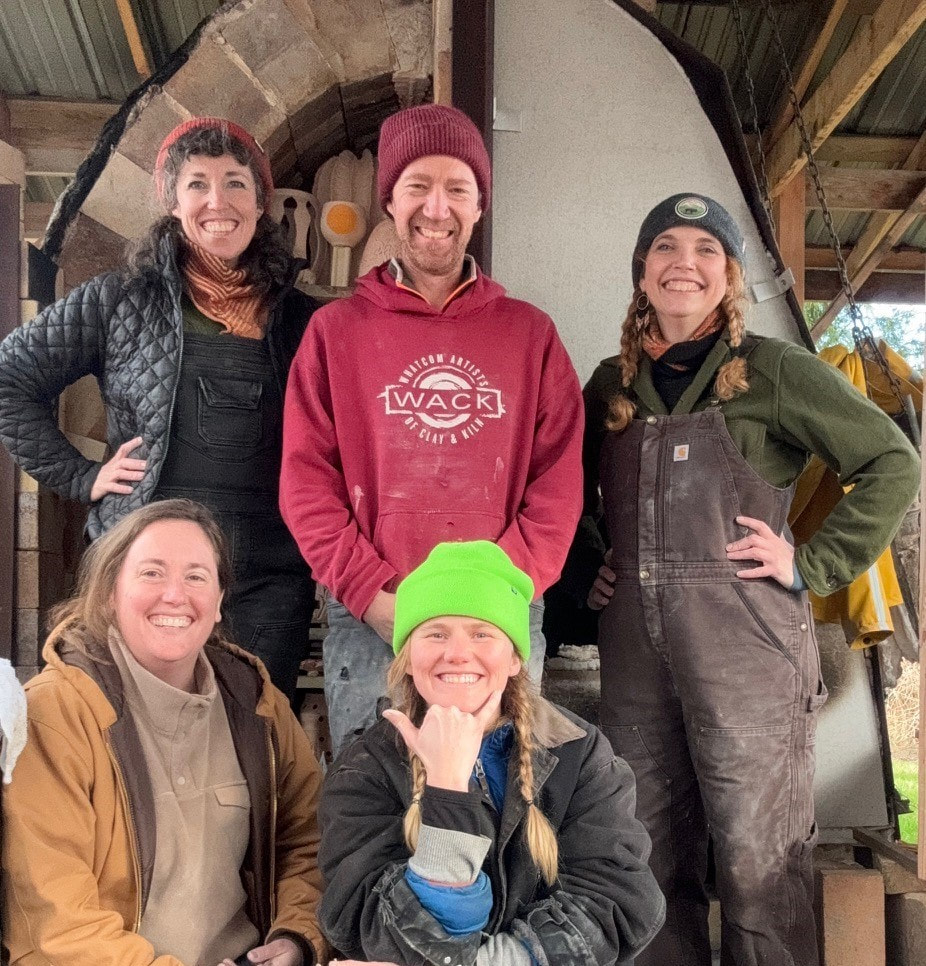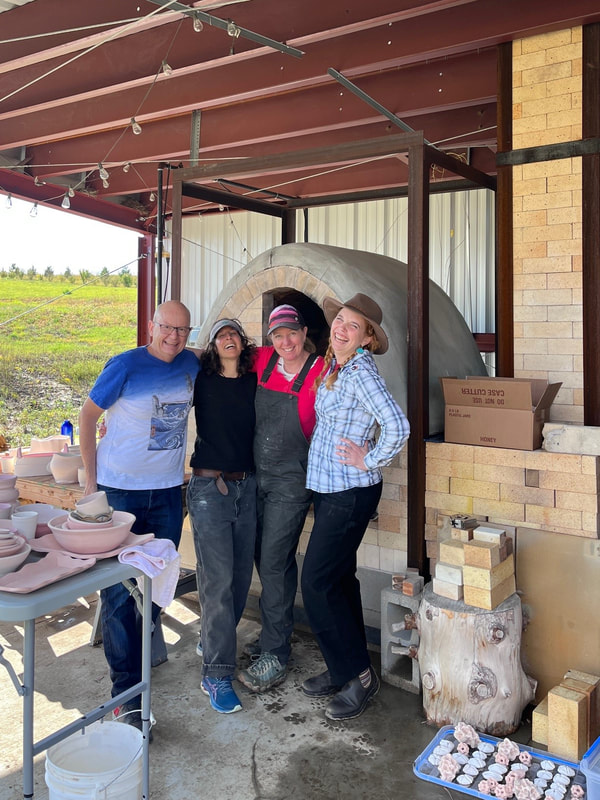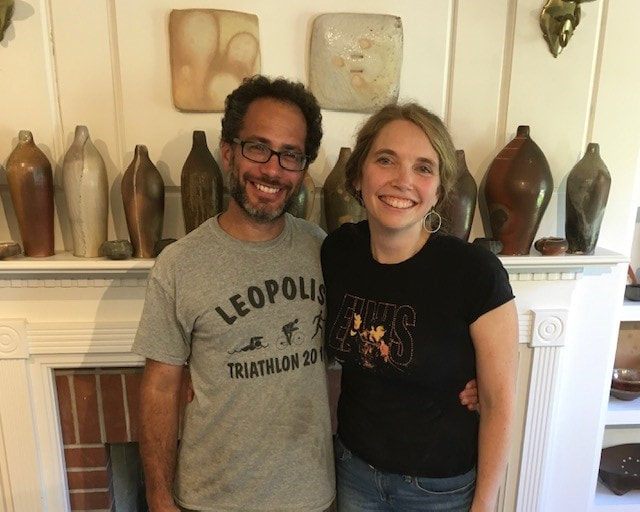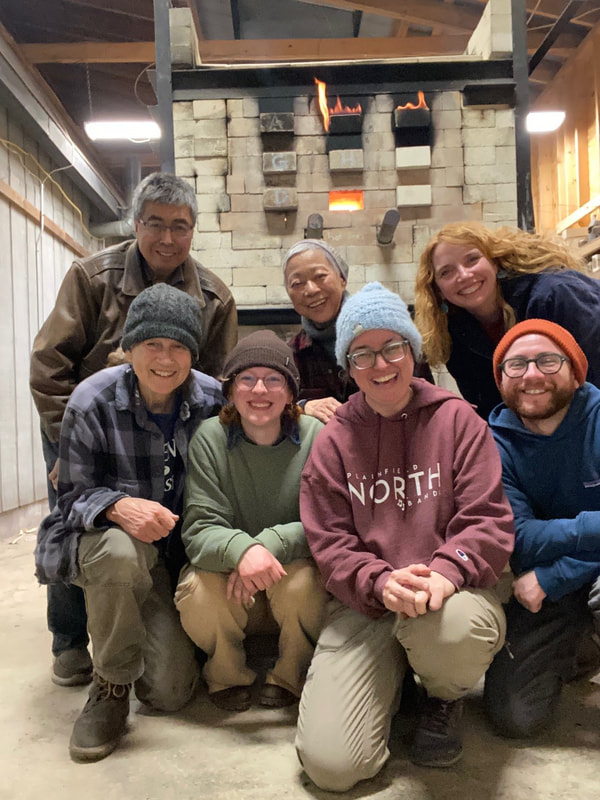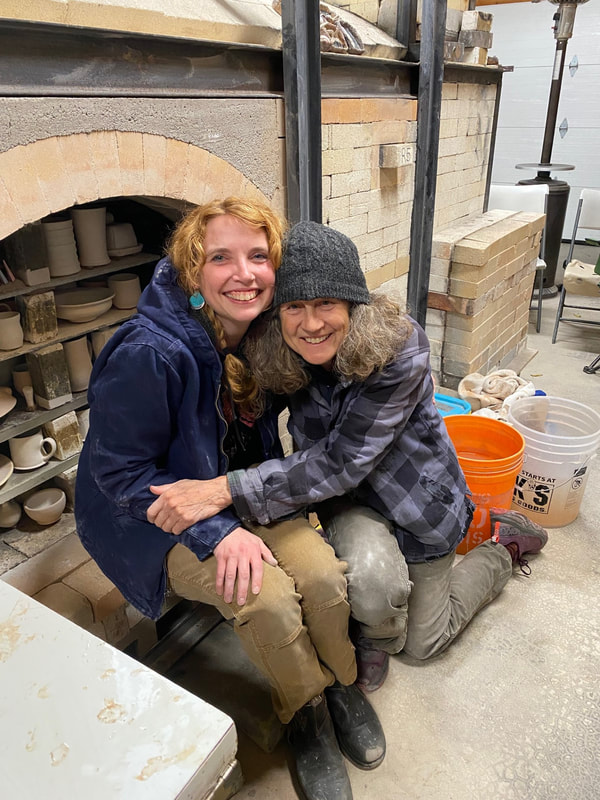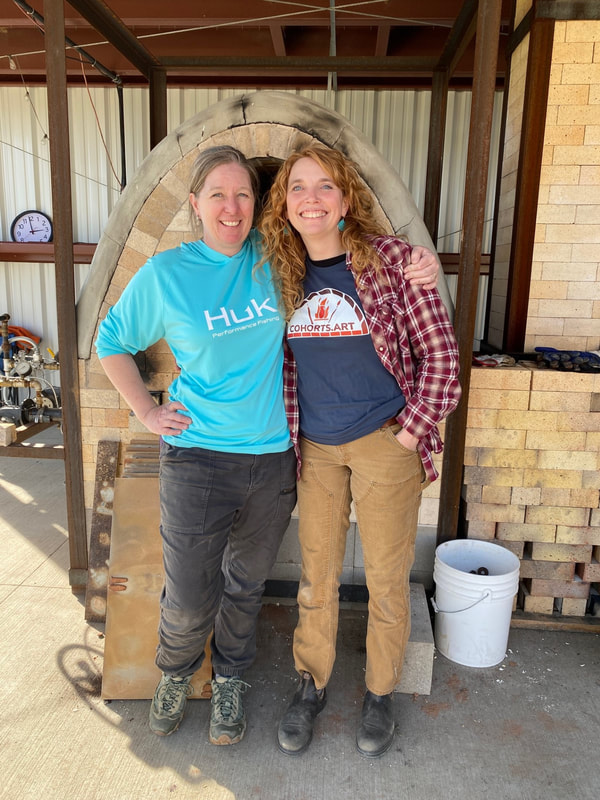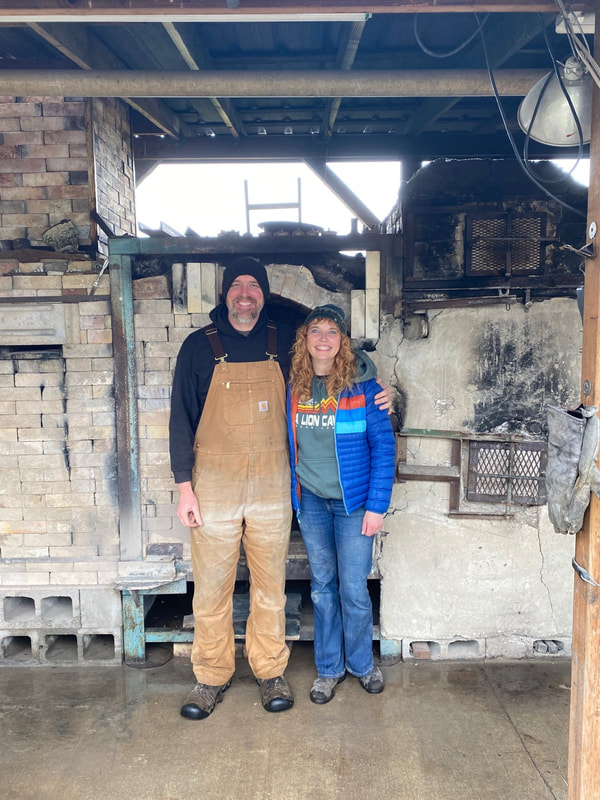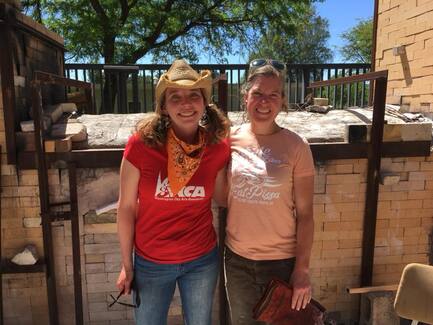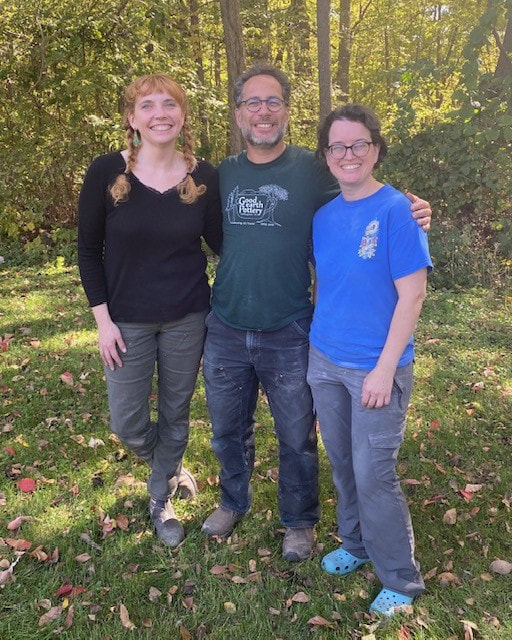A Kindled Spirit
Ann Marie coined the phrase "Kindled Spirit" for those like her, the ceramicists with a passion for claying with fire. These folks find each other across the globe, sharing knowledge, experience, woes, and good times.
Wood-FiringIt takes a team of people all day (or many days) to load the kiln, taking into careful consideration how each pot is stacked on or near another in the hopes of capturing ideal flame impressions and ash accumulation. Then the kiln is fired for 30-50 hours--or more--depending on the kind of kiln. The kiln is always attended, and stoked around the clock. It's an intense, but worthwhile process that produces unique work and outstanding friendships. |
Ann Marie's heart belongs to wood-firing.
|
|
In 2021, Ann Marie began building a wood kiln with friends in Bellingham, Washington, which will allow much more frequent wood-firings! The group completed and successfully fired their Coyote Kiln in June of 2023.
|
Introduced to wood-firing in 2013 at the Smoke Farm Train Kiln, Ann Marie quickly developed a deep affection for atmospheric firing. Her passion for wood-firing has brought great adventures and the dearest friendships into her life.
|
Stoke On!
Ann Marie has also spent several years soda-firing, another type of atmospheric firing that relies on thoughtful kiln loading, [gas] fire and soda ash for unique finished effects.
